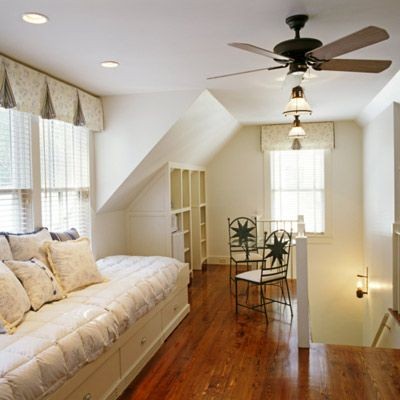Selecting the appropriate ceiling fan size is critical for ensuring optimal performance, maximizing energy efficiency, and achieving the desired aesthetic in your space. An incorrectly sized fan not only looks out of place but can also lead to increased energy consumption and ineffective air circulation. This comprehensive guide will walk you through all the essential factors to consider when determining the perfect ceiling fan size for your room, from room dimensions to ceiling heights, helping you make the right choice.
Understanding Ceiling Fan Sizing Basics
The fundamental principle of ceiling fan sizing revolves around the fan’s blade span and the room’s square footage. Blade span refers to the diameter of the circle created when the fan blades rotate. Generally speaking, larger rooms necessitate fans with greater blade spans to effectively circulate air throughout the entire space. However, it’s important to note that other elements, such as ceiling height and the room’s layout, also significantly influence the determination of the ideal fan size.
Key Factors Influencing Ceiling Fan Size
Several crucial factors should be taken into account when deciding on the correct ceiling fan size for your specific space.
Room Dimensions and Square Footage
The square footage of your room is the most important factor in choosing the right fan size. Larger rooms require fans with longer blades to move a greater volume of air. For example, a small bedroom might only need a 36-inch ceiling fan, whereas a large living room would likely benefit from a 52-inch or even a larger model. Furthermore, rooms with irregular shapes may need multiple fans to guarantee efficient air circulation throughout all areas.
Ceiling Height Considerations
Standard 8-foot ceilings are generally compatible with most ceiling fan sizes. However, rooms with higher ceilings may require the use of longer downrods or specialized “hugger” or low-profile fans to ensure optimal airflow and safe blade clearance. For homes with varying ceiling heights across different rooms, it’s crucial to consider different fan types for each space to maintain consistent and effective airflow.
Airflow and Room Purpose
The intended use of the room and your specific airflow requirements play a significant role in fan sizing. Rooms that naturally generate more heat or require enhanced air circulation, such as kitchens or home gyms, might need larger fans or even multiple fans to effectively meet cooling demands. For instance, a kitchen ceiling fan should be adequately sized to handle the heat produced by cooking appliances and improve ventilation.
How to Measure Your Room for the Ideal Fan Size
To accurately determine the appropriate ceiling fan size, begin by measuring the length and width of your room in feet. Multiply these two measurements to calculate the room’s square footage. For example, a room measuring 12 feet by 15 feet has a square footage of 180 square feet. This square footage measurement will serve as your primary guide when selecting the correct fan size. Remember to also consider the room’s layout and intended function, as these factors can further refine your fan size decision.
Ceiling Fan Size Chart: Matching Fan Diameter to Room Size
Use this general ceiling fan sizing chart as a starting point to match the appropriate fan diameter to your room’s square footage:
- Up to 75 square feet: 29–36 inch ceiling fan
- 76–144 square feet: 36–42 inch ceiling fan
- 144–225 square feet: 44–50 inch ceiling fan
- 225–400 square feet: 50–54 inch ceiling fan
- Over 400 square feet: 60 inch or larger ceiling fan
Keep in mind that these are general recommendations. Your specific room layout, ceiling height, and personal cooling preferences might influence the ideal fan size for your space. Always consider these additional factors when using the size chart to make your final decision.
Selecting the Right Blade Span for Optimal Airflow
Choosing the correct blade span is essential to ensure that your ceiling fan operates efficiently and provides the desired level of comfort. While room purpose, ceiling height, and layout can influence these guidelines, the following are generally recommended fan sizes based on room square footage:
- 36-inch fans: Best for rooms up to 100 square feet, such as small bedrooms or offices.
- 42-inch fans: Suitable for rooms between 100 and 200 square feet, like medium-sized bedrooms or dining areas.
- 52-inch fans: Ideal for rooms up to 400 square feet, including larger living rooms, family rooms, and master bedrooms.
- 60-inch fans and larger: Designed for rooms larger than 400 square feet, such as great rooms or open-plan living areas.
Ceiling Height’s Impact on Ceiling Fan Selection
Ceiling height is a critical factor in ceiling fan selection and installation. Different ceiling heights necessitate specific installation approaches to ensure both safety and optimal performance.
Standard Ceiling Heights (8-9 feet)
For standard ceiling heights of 8 to 9 feet, standard mount ceiling fans are typically suitable. These fans often come with a 3- to 5-inch downrod, providing adequate clearance between the blades and the ceiling for efficient air circulation. Standard-height ceilings offer the most flexibility in choosing from a wide variety of ceiling fan styles and sizes.
High and Vaulted Ceilings (Over 9 feet)
Rooms with ceilings higher than 9 feet require longer downrods to lower the fan to the optimal height for effective air circulation. For vaulted or sloped ceilings, you’ll need a specialized vaulted ceiling mounting adapter to ensure the fan hangs level and operates correctly. Some manufacturers offer adapters designed for ceiling angles up to 48 degrees. High ceilings frequently require a more customized approach to ceiling fan installation to achieve the best airflow and maintain visual balance in the room.
The Importance of Downrod Length for Performance
The downrod plays a vital role in positioning your ceiling fan at the ideal height for maximum efficiency. For the most effective cooling and air circulation, ceiling fans should ideally be hung approximately 8 feet above the floor. To calculate the correct downrod length, subtract 8 feet from your ceiling height, and then add about 1 foot to account for the fan motor housing and mounting hardware. Choosing the right downrod length ensures that the fan operates efficiently and enhances the overall comfort of the room.
Special Considerations for Unique Room Layouts
Certain room layouts present unique challenges when sizing a ceiling fan. However, with careful consideration and strategic planning, you can achieve effective air circulation even in unconventional spaces.
Open Floor Plans
In open floor plans, you may need to consider installing multiple ceiling fans or opting for larger models to adequately circulate air throughout the entire combined space. Strategically placing fans to cover different zones within the open area can help ensure balanced airflow and comfort.
Long and Narrow Rooms
For long, narrow rooms, such as hallways or galley kitchens, it’s often more effective to install several smaller ceiling fans spaced along the length of the room, rather than relying on a single large, centrally located fan. This approach promotes more even air distribution throughout the elongated space.
Energy Efficiency and Ceiling Fan Size
The size of your ceiling fan can have a noticeable impact on its energy efficiency. While larger fans may have slightly more powerful motors, they are often more efficient at moving air, which can potentially reduce your reliance on air conditioning and lower energy bills. When selecting a ceiling fan, look for ENERGY STAR-certified models. ENERGY STAR rated ceiling fans are significantly more energy-efficient, often up to 60% more efficient than conventional fan and light units. Choosing an energy-efficient fan is not only cost-effective but also contributes to a more sustainable and environmentally friendly home.
Aesthetic Considerations in Ceiling Fan Sizing
While functionality is paramount, the aesthetic impact of your ceiling fan should not be overlooked. A ceiling fan that is too large can visually overpower a room, while a fan that is too small may appear insignificant and out of proportion. Consider the room’s existing decor, furniture, and overall proportions when selecting your fan size to ensure it complements the space harmoniously. Additionally, choose a fan style and finish that aligns with the room’s design aesthetic, whether it’s modern, traditional, rustic, or eclectic.
Installation Tips for Different Ceiling Fan Sizes
Proper installation is crucial for the safe and efficient operation of your ceiling fan, regardless of its size. Adhering to correct installation practices ensures that your fan performs optimally and enhances the comfort and safety of your space.
Mounting Options Based on Size and Ceiling Type
Different ceiling fan sizes and weights may necessitate specific mounting options. Flush mount or hugger-style mounts are ideal for low ceilings where maximizing headroom is essential. Downrod mounts are better suited for standard and high ceilings, allowing for optimal fan placement and airflow. Ensure you select the appropriate mounting type for your chosen fan size and your specific ceiling structure.
Electrical Requirements and Safety
Larger ceiling fans, particularly those with lights or more powerful motors, may have greater electrical demands. Always consult a qualified electrician when replacing an existing light fixture with a ceiling fan to ensure that your ceiling electrical box is fan-rated and can safely support the weight and operation of the new fan. For detailed guidance on safe and proper installation, refer to comprehensive resources on how to install a ceiling fan. Proper electrical setup is absolutely essential for the safe and reliable operation of your ceiling fan.
Common Mistakes to Avoid When Sizing a Ceiling Fan
To ensure you select the best ceiling fan size for your needs, be aware of these common mistakes:
- Choosing a fan that is too small: Undersized fans will not effectively circulate air in larger rooms, leading to discomfort and inefficiency.
- Ignoring ceiling height: Failing to consider ceiling height can result in improper fan placement, reduced airflow, and potential safety hazards.
- Overlooking clearance: Not ensuring adequate clearance from walls, furniture, and other obstacles can impede fan blade rotation and airflow.
- Neglecting room-specific cooling needs: Failing to consider the room’s purpose and specific cooling requirements can lead to inadequate fan performance.
- Disregarding aesthetics: Ignoring the fan’s visual impact on the room’s decor can result in a mismatched or unappealing design.
Conclusion: Selecting the Perfect Ceiling Fan Size
By carefully considering your room’s dimensions, ceiling height, intended use, and aesthetic preferences, you can confidently choose a ceiling fan that not only performs efficiently but also enhances your home’s comfort and style. Remember, a well-sized ceiling fan is a valuable investment that can improve your home’s energy efficiency, potentially reduce your reliance on air conditioning, and create a more comfortable and enjoyable living environment.
For those with unique spaces, complex layouts, or specific cooling challenges, don’t hesitate to seek advice from a professional lighting or ceiling fan specialist. They can provide personalized recommendations and ensure that your chosen fan is the right size and is installed correctly for optimal performance and lasting satisfaction.


